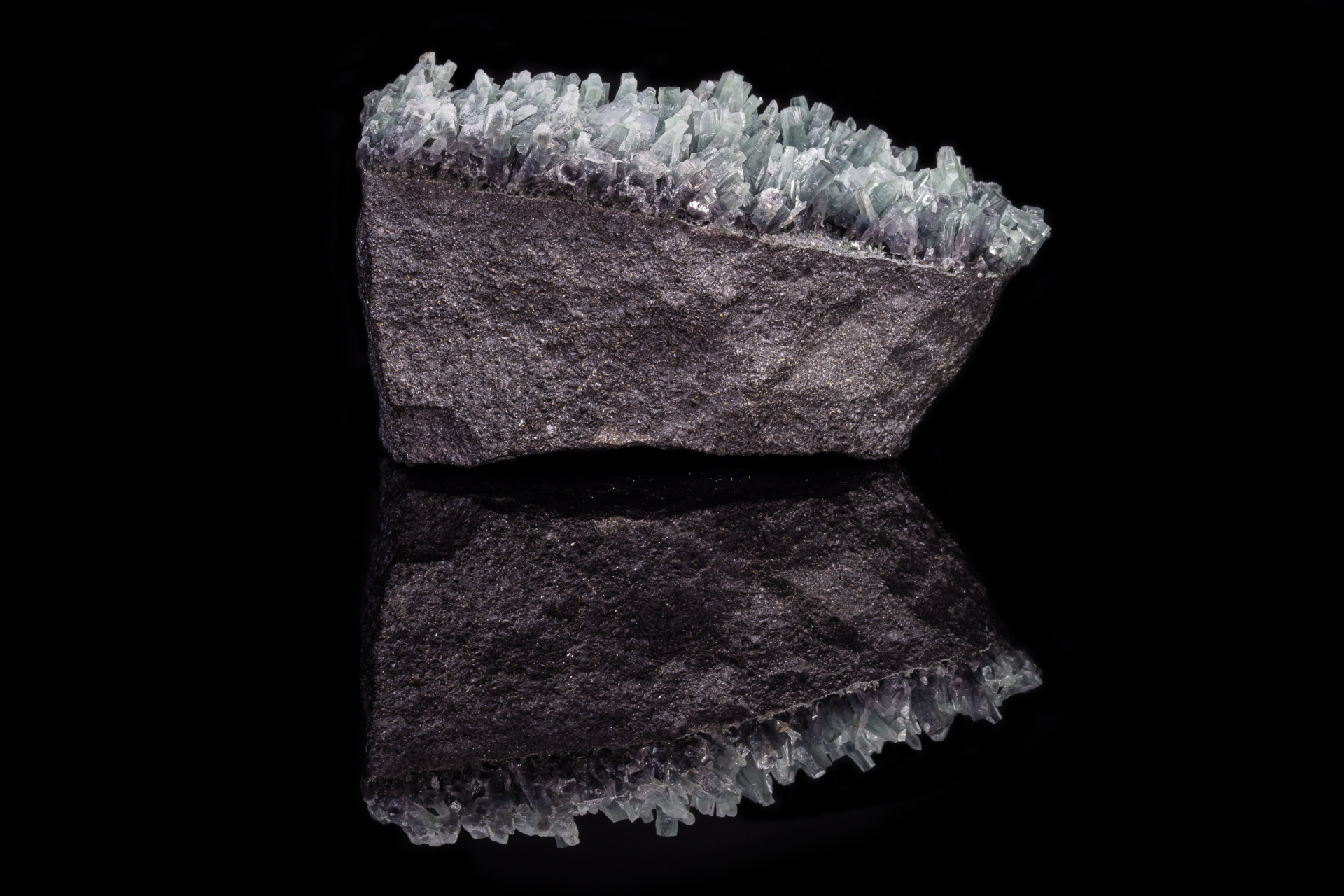Chromite
Formula: Fe2+Cr3+2O4
Species: Oxides
Colour: Black
Lustre: Resinous, Greasy, Metallic, Sub-Metallic, Dull
Hardness: 5½
Specific Gravity: 4.5 – 4.8
Crystal System: Isometric
Member of: Spinel Subgroup > Oxyspinel Group > Spinel Supergroup
Name: Chromite was named in 1845 by Wilhelm Haidinger in allusion to its composition. The species was originally named fer chromate alumine by Louis Nicolas Vauquelin in 1798. Vauquelin was the discoverer of the element chromium.
Type Locality: Carrade de Cavalaire, Cavalaire-sur-Mer, Draguignan, Var, Provence-Alpes-Côte d’Azur, France
Polymorph of: Chenmingite, Xieite
Isostructural with: Magnesiochromite, Magnetite
Chromite is the most important chromium ore mineral. It forms a complete solid solution series with many other members of the group, eg. in the Chromite-Hercynite Series, Chromite-Spinel Series, Chromite-Magnetite Series and the Chromite-Magnesiochromite Series. It is the iron analogue of Zincochromite, Cochromite, Manganochromite and Magnesiochromite and the Cr analogue of Hercynite, Coulsonite and Magnetite. It usually contains Mg, ferric iron [Fe(III)], Al and often trace amounts of Ti. “Ferritchromite”, i.e. Fe(III) substitutions for Al and Cr, usually in grain rims, may give high total Fe contents and a false chromite identification. Of course, the definition requires dominant Fe(II)>Mg and Cr>Fe(III). (e.g. photo ID: 514894). “Chromite” is commonly used for any Cr-rich mineral of the spinel group, particularly for the chromite-magnesiochromite series, and much of the mineral referred to as “chromite” in geological and petrological papers and mining statistics is magnesiochromite. The Fe-dominant species – chromite itself – can be FOUND, although uncommonly, in many “chromite” deposits, chromitite (rock name), and other “chromite”-bearing occurrences connected with hyperbasic rocks. As a rule of thumb, a member of the chromite-magnesiochromite series is twice as likely to be a magnesiochromite instead of a chromite. “Chromites” associated with olivine or serpentines, which are Mg-rich rocks, frequently have Mg-rich associated minerals. True chromite is common as inclusions in diamonds from kimberlites (South Africa and Yakutia). Members of the spinel group may be enriched Cr and V in marbles (Slyudyanka), massive sulphide ores (Outokumpu) and also in some types of meteorites.

